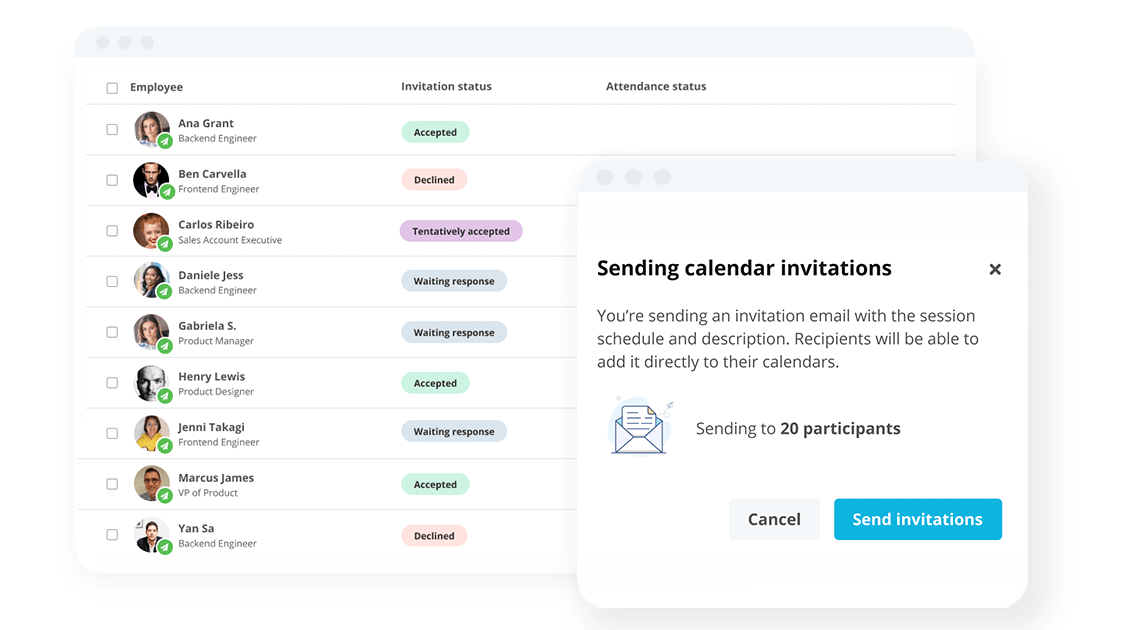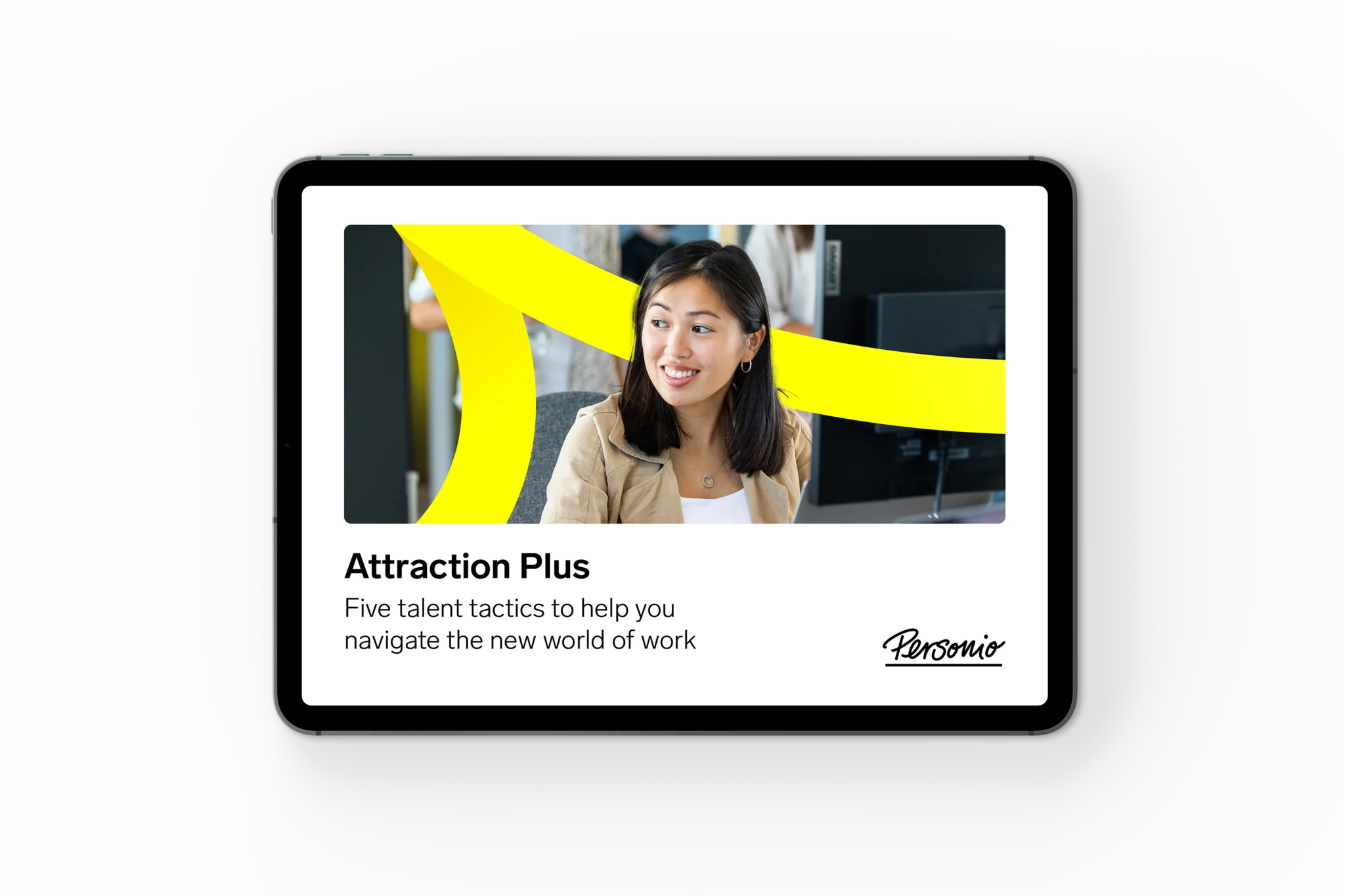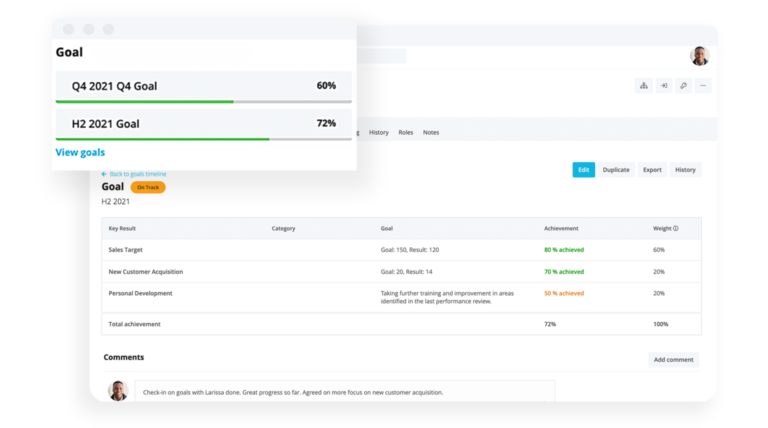Understanding the 70/20/10 learning model
Understanding the 70/20/10 learning model
The 70/20/10 model is a foundational learning and development framework that has shaped performance management and effective workplace training for decades. Introduced in the 1980’s, the model remains relevant even for today’s modern workforce. In this article, we’ll describe the model in detail, explain how it works, and how you can successfully apply it in your organisation starting today.
Drive employee performance to new heights with Personio. Find out how.What is the 70/20/10 learning model?
The 70/20/10 learning model is a widely adopted learning and development framework that breaks down learning into three key categories:
70% happens through experiential, practical learning
20% through social interactions and peer collaboration
10% through formalised learning programmes.
Originally created by Morgan McCall, Michael M. Lombardo, and Rober A. Eichinger for the Center of Creative Leadership, the 70/20/10 concept was derived from studies on how successful managers learn best. It has since become a key principle in many learning and development strategies across various industries.
Many organisations rely on the 70/20/10 model to structure their L&D programmes in a way that reflects how employees naturally absorb information.
Benefits of the 70/20/10 learning and development model
Organisations that adopt the 70/20/10 learning and development model often see benefits that include:
Higher retention rates: Thanks to employees learning new skills.
Increased responsibility: Giving employees more autonomy in their roles.
Improved productivity: New skills typically correlate with better work outcomes.
Better rewards: Tie development to results with compensation management.
Higher satisfaction: Employees enjoy their work – and their new skills – more.
By aligning development programs with the 70/20/10 principle, HR teams can design more impactful and sustainable learning experiences.
How the 70/20/10 framework works in practice
The purpose of the 70/20/10 learning model is to provide a diverse range of learning and development opportunities to employees. When employees enjoy a mix, they learn from different angles and become more fully formed professionals.
With that in mind, the beauty of the 70/20/10 model is that it is quite versatile. Given the rise of hybrid working models and remote work, employees are even more used to learning in person as much as they are to learning over a screen. Given the rise of hybrid and remote work, employees are even more used to learning in person as much as they are to learning over a screen.
That might make right now an ideal time to implement a blended learning model in your organisation. This kind of model relies on exactly that mix: some hands-on training, some in-person training and some work done through online courses, for example.
However, it’s one thing to say it and another to show it. Let’s talk a bit about how you can implement this learning model into your organisation.
Develop Staff With Ease

Track training attendance, progress and compliance across your organisation from one central, easy-to-use tool.
Implementing a 70/20/10 learning model
Learning models take time. The first piece of advice is to start slowly when rolling out a new model for learning within your organisation. Anything you introduce will need time to familiarise people with the change and speed up adoption.
Best practice: Kick things off with a small focus group in your organisation. Trial your messaging, tasks and outcomes with them. Make sure to ask for feedback at each stage and consider this your organisational “control group” to help advance this change in learning.
Many organisations run into a similar challenge when it comes to the 70/20/10 model. Mainly, convincing employees that 70% of their learning should come from hands-on experiences and as much from courses or more “traditional” learning methods.
That kind of shift is what makes this model relevant to an overall change management programme for your organisation. Mainly, to shift the mindset of your employees and have them see learning in a new light, something achieved much easier when your core HR software supports efficient employee data and process management from the ground up.
Help train your employees in new ways
For an organisation that wants to keep innovating and improving, new learning models – like the 70/20/10 model – can help your employees learn, develop and improve. But, as an HR team, you need to keep on top of all that learning.
That’s where Performance Management Software in Personio’s all-in-one HR suite comes in. It can help your HR team track development, set measurable goals, and align learning with business outcomes, turning everyday work into meaningful performance insights. Book a demo to learn more and see how Personio can save your organisation valuable time.
70/20/10 learning model: Frequently asked questions
How can you maximise the 70/20/10 learning model?
Individuals need to be open to new learning experiences and embrace challenges and challenging roles. The concept of the 70/20/10 model is that 70% of learning happens through doing the work, so employees need to be ready to jump on opportunities in order to maximise the benefits of this learning model.
What are the challenges to implementing the 70/20/10 model?
The biggest challenge to the 70/20/10 learning model is employee adoption. For the model to succeed, there needs to be an organisational shift in mindset. That shift is only possible when employees understand what is happening, why it’s happening and what they need to do. HR teams should prioritise this element of the model above all others.
How effective is the 70/20/10 model?
The 70/20/10 learning model is one of the most effective learning and development frameworks in the modern workplace. The bigger challenge is making it effective for employees, looping it into their daily work and emphasising the fact that they are actively learning on the job.
Streamline how you develop employees


